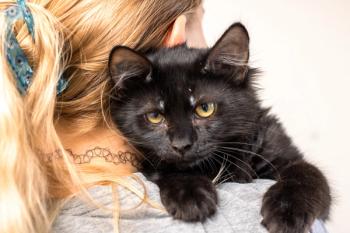
Veterinarians warned of drug-resistant ringworm infections
CDC asks veterinary professionals to be on the lookout for difficult-to-treat ringworm infection patients
United States public health officials are asking veterinary professionals to be on the lookout for antifungal-resistant ringworm infections. This strain is caused by a novel fungus originating from the Indian subcontinent 10 years ago and is a threat to both humans and animals across the globe.
Those with Trichophyton indotinea (T indoline) present with a widespread inflamed or dry and scaly pruritic plaque of tinea corporis, cruris, facia on the body, crural fold, pubic region and adjacent thigh, or the face.1 Researchers believe that the overuse and inappropriate use of topical antifungals and corticosteroids is causing the epidemic of this disease. According to the American Veterinary Medical Association (AVMA), canines and cattle living in Iran and India have been diagnosed with this infection but, at this time, no animal cases have been reported within the US.
“We want to encourage US veterinarians to be aware of potential animal infections of T indoline because of its high person-to-person transmissibility and its isolation in dogs and cattle,” Jeremy Gold, MD, a medical epidemiologist with the CDC’s mycotic diseases branch, said in a news release.1
The ringworm infection in human cases is attributed to T indotineae, which is highly contagious and often drug resistant. The strain has been reported on 6 continents as well as reaching the US on February 28, 2023, when a dermatologist in New York, New York, notified public health officials that he was treating 2 patients with severe tinea that was not improving with oral terbinafine treatment. Skin culture isolates from the patients were previously identified by a clinical laboratory as Trichophyton menagrophytes and was given to the Wadsworth Center, New York State Department of Health for further analysis and review. In March 2023, the sample was identified as T indotineae.2
The CDC disclosed that there are no cases in which the infection spread from humans to animals, but this cannot be ruled out based on how infectious the fungus is. Data on T indotineae infections in animals are limited, and it is unknown whether or how often transmission between animals and humans occurs. It is also unknown whether and how the clinical presentation of T indotineae differs from ringworm that is caused by other dermatophytes.1
“There’s a lot we are still learning about drug-resistant ringworm, and veterinarians are often like the eyes and ears of public health. So, it’s important for veterinarians concerned about possible antimicrobial-resistant ringworm to reach out to their public health officials or state public health veterinarian for support because they can provide useful information,” Goldman concluded.1
References
- Veterinarians advised to watch for drug-resistant ringworm infections. News release. May 28, 2024. Accessed May 30, 2024.
https://www.avma.org/news/veterinarians-advised-watch-drug-resistant-ringworm-infections?utm_source=delivra&utm_medium=email&utm_campaign=todays-headlines-news - Caplan AS, Chaturvedi S, Zhu Y, et al. Notes from the Field: First Reported U.S. Cases of Tinea Caused by Trichophyton indotineae - New York City, December 2021-March 2023. MMWR Morb Mortal Wkly Rep. 2023;72(19):536-537. Published 2023 May 12. doi:10.15585/mmwr.mm7219a4
Newsletter
From exam room tips to practice management insights, get trusted veterinary news delivered straight to your inbox—subscribe to dvm360.






